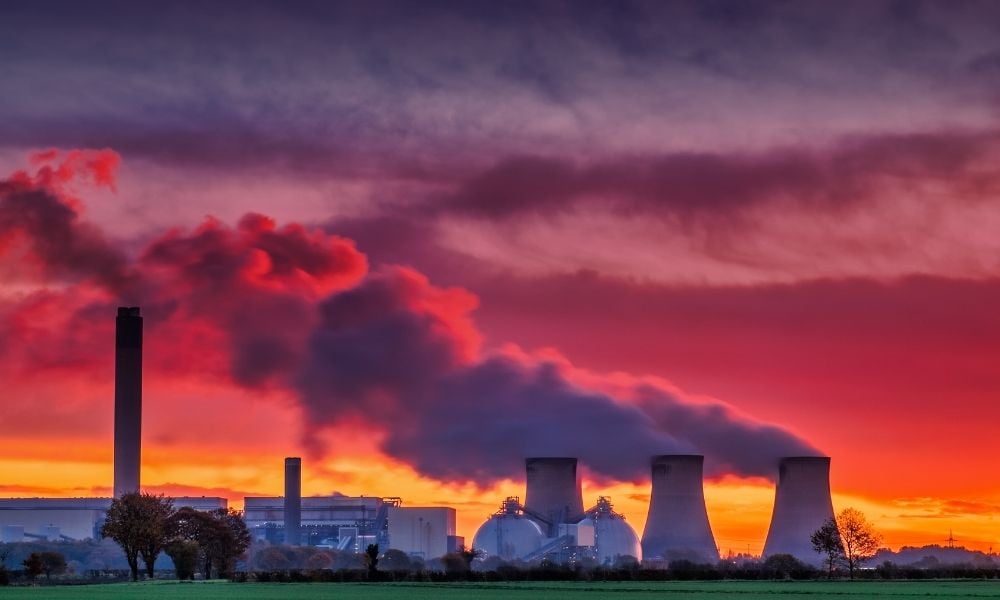In August, the United Nations’ Intergovernmental Panel on Climate Change released its sixth in a series of reports assessing scientific, technical, and socio-economic information concerning climate change. The report issued a dire warning; some climate changes that have already occurred are “irreversible” for centuries to millennia to come. UN Secretary-General António Guterres called the report "a code red for humanity.”
It found that “the threat of climate change is real,” says Barnali Choudhury, professor of law and director of the Jack & Mae Nathanson Centre on Transnational Human Rights, Crime and Security, at Osgoode Hall Law School in Toronto.
“By 2030, we will have reached our 1.5 degrees Celsius limit. That’s when the irreversible problems of climate change occur.”
Choudhury’s research focuses on how corporations should be encouraged, if not mandated, to consider climate change risks. After spending ten years as a law professor at University College London, England and then returning to Canada, she finds Canada/North America compares poorly to Europe in environmental regulations.
For example, she says, s. 122 (1.1) of the Canada Business Corporations Act indicates that corporations “may consider” the environment when acting with a view to the best interests of the corporation, but are not required to do so.
Compare that with French law, she says, where “any company that at the end of two consecutive financial years employs at least 5,000 employees … must establish and implement an effective vigilance plan [that] shall include the reasonable vigilance measures to allow for risk identification and for the prevention of severe violations of human rights and fundamental freedoms, serious bodily injury or environmental damage or health risks resulting directly or indirectly from the operations of the company and of the companies it controls ….”
Learn the different Canadian laws on human rights in the workplace, its prohibitions, and the responsibilities it imposes upon employers.
The European Union is currently negotiating a large-scale directive which would require all European companies to consider human rights and environmental issues, she says — “and that’s really where Canada needs to be.”
Canada’s energy production varies by province, says Alexandria Pike, a partner in Davies Ward Phillips & Vineberg LLP in Toronto, “so when you compare us to Europe, some of our jurisdictions actually do better in terms of the emissions from energy production.”
That said, Europe has “been working under a carbon system actively and in a very concentrated, focussed manner for a very long time now,” says Pike, and has cooperation between countries that allows for a level of efficiency.
North America has not “participated in the carbon market internationally the way the Europeans and other international players have” following the Kyoto, Paris and other conferences, says Adam Chamberlain, leader of Gowling WLG’s climate change and environmental law group, based in Toronto.
“Certainly, from the North American point of view, we’re not really into an international carbon trading system that works across international borders,” he says. There are exceptions. For example, along with California, Quebec is part of the Western Climate Initiative that trades greenhouse gas emissions. “But we don’t see a broad system of carbon trading across the Canadian-U.S. border, let alone internationally.”
While there is some way to go on that front, he says, “there’s a lot of desire to move there.”
Canada’s policy and initiatives
In April, Canada joined the Net-Zero Producers Forum with four other nations — Norway, Qatar, Saudi Arabia and the United States — as part of the country’s climate commitments. The five countries together produce 40 per cent of the world’s oil and gas, and the forum will develop long-term strategies to reach global net-zero greenhouse gas emissions by 2050.
In June, the Canadian Net-Zero Emissions Accountability Act received royal assent. The legislation supports Canada’s efforts to achieve net-zero emissions, also by the year 2050.
That goal is what everybody has to start moving towards, Pike says. “A lot of Canadian companies were in a wait-and-see mode until the federal legislation was upheld this spring” by the Supreme Court of Canada’s carbon pricing decision, References re Greenhouse Gas Pollution Pricing Act. “Now that they have this net-zero target ahead of them as well, there’s a lot of work that’s going to have to be done.”
The federal Greenhouse Gas Pollution Pricing Act (GGPPA) was brought into force in 2018 and introduced a charge on fuels consumed and an output-based performance standard for industrial emitters. The legislation was central to the government’s plan to meet Canada’s Paris Agreement commitment to reduce GHG emissions to 30 per cent below 2005 levels by 2030.
Learn more about air pollution regulation in Canada, and how it is implemented from the federal down to the municipal levels.
On March 25, 2021, the Supreme Court upheld the constitutionality of the Act. In dismissing the appeals by Saskatchewan and Ontario, which challenged the constitutionality of the Act, the majority held that the federal government had the right to impose a minimum “carbon tax” on polluters. This right, the court found, was because reducing greenhouse gas emissions was a matter of national concern under the “peace, order and good government” section of the constitution.
Although the energy industry knew and expected that it would have to deal with the current federal regime, “I’m not sure that the readiness to deal with the outcome of the net-zero obligations are quite as well understood. I don’t think that companies are ready for it yet,” Pike adds.
“I think that they’re going to have to be getting their house in order.”
Pike cites Suncor, British Petroleum and Shell as examples of early-adopter oil and gas companies that have diversified their range of products to include hydrogen and renewable forms of energy. However, “there’ll have to be a lot done to make sure other energy companies are on track for this.”
Pike says companies still need to grapple with downstream “scope 3” emissions. These are the result of activities from assets not owned or controlled by a reporting organization but indirectly affecting its value chain. The challenge is also “how you calculate and work to green those.”
Decisions starting to be made at an environmental assessment level that will consider downstream emissions and in the public interest “will be really transformative,” she adds. “That’s where we’re going to see some really tough choices made on a policy level. I think there’s a lot more to come.”
The Parliamentary Budget Officer published an assessment of carbon policies in June titled “Beyond Paris: Reducing Canada's GHG Emissions by 2030.” The report provides “a pretty good analysis of what the impacts would be on the Canadian economy” in achieving this goal, says Bradley Gilmour, head of regulatory department and head of facilities, projects & approvals practice for Bennett Jones LLP, from his Calgary office.
“What they find is that achieving these targets will have a negative impact on the Canadian economy, and particularly to individual Canadians that are at the lower end of the economic spectrum,” he says. The transportation and oil and gas industry will be the most affected in meeting these greenhouse gas targets. “It will have a significant effect on the [energy] industry; there’s no doubt,” Gilmour says.
How much this will affect Canada’s ability to remain a competitive jurisdiction for the development of oil and gas, which “will be needed globally well into the future as part of the energy mix,” remains an open question, he says. “Will that capital go elsewhere?”
To take on the challenge, the oil and gas industry, to some extent, will do what it has been doing for a decade or more, Gilmour says, which is to look for technological changes to help reduce their overall environmental footprint.
“What may change, though, is that some of that development may be at a more advanced pace to try to meet these ambitious targets.”
And the cost for energy companies not meeting targets may be high, says Choudhury. “Corporate risk can be as simple as … moving to assets that will no longer have any value.” When a sufficiently urgent need to address climate change arises, governments may restrict or even prohibit the use of oil and gas, thus “stranding” assets of the energy sector.
New governments, new priorities, big debt
With a recent federal election and Ontario elections set for the spring, it will be interesting to see how policy changes, says Chamberlain. On top of that, he says, “governments have had essentially carte blanche to spend like crazy during the last year and a half” in response to the COVID-19 pandemic. The worry, he notes, is that Canadians will find themselves in a few years with a lot of public debt, meaning governments will have to curtail their spending.
“Our environmental policies aren’t free,” he says, and so it will be essential to find ways of managing the energy sector’s environmental impacts in as “efficient a way as possible.”





